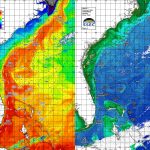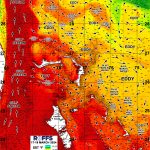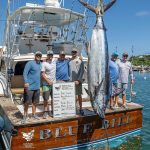[responsive] [/responsive]
[/responsive]
Above: Dr. Roffer with Senator Nelson and other speakers after Roffer’s testimony at the US Senate subcommittee hearing on the threats to Florida’s tourism economy today in St. Petersburg, FL. Roffer talked about clean water and healthy ecosystems as being the basis for Florida’s economy.
Introduction
I am Mitchell A. Roffer, President of Roffer’s Ocean Fishing Forecasting Service Inc., and Adjunct Faculty at the Florida Institute of Technology, Department of Ocean Engineering and Sciences. I received my Doctorate from the University of Miami’s Rosenstiel School of Marine and Atmospheric Science in Biological Oceanography. ROFFS™ provides a variety of consulting services to the recreational and commercial fishing industries, as well as, to the oil and gas industry, ocean towing industry, environmental consulting organizations, as well as, to academic and government organizations. I am actively involved in ocean research with a variety of collaborators from academia, the government sector and non-governmental organizations. I was a member of NASA’s Ecological and Biodiversity Science team for 11 years. Thus, I am in constant contact with a broad range of people who conduct business in Florida, as well as, fish in Florida in addition to those visitors who travel to Florida to fish and use the water.
When people visit Florida as tourists and when Floridians get up each morning they assume that the air and water will be clean and that the waters will provide an abundance of marine life whether it be fish, marine mammals like dolphins and manatees, turtles, or birds. Over the years Florida has had sufficient clean air, clean water and healthy marine life to support good fisheries and fantastic tourism. The National Marine Manufacturers Association estimated that the total annual economic impact of recreational boating in Florida is $10.35 Billion. Recreational boating provides for approximately 83K jobs in 5.5K businesses. See (http://www.nmma.org/assets/cabinets/Cabinet508/Florida_Boating_Economics%20State.pdf). The State of Florida (http://www.myfwc.com/about/overview/economics/) cites very similar numbers.
Governor Scott’s Report (http://www.flgov.com/2016/06/10/gov-scott-florida-continues-to-lead-the-nation-in-saltwater-fishing-jobs-and-revenue/) indicates that with 2014 data from NOAA, indicates that Florida is number one in the nation in jobs supported by the recreational saltwater fishing industry at 114,898 jobs. The report states “Our state’s world class boating and fishing also helped attract a record 105 million tourists in 2015.” According to the report, Florida’s commercial seafood industry was third in the nation in 2014 in numbers of jobs supported with 92,858 jobs. Florida is also second in the nation when it comes to highest sales, income and value-added impacts from the commercial fishing industry with 18.3 billion in sales impacts. The 2014 data are the latest economic data available.
The Bonefish & Tarpon Trust estimated that statewide, saltwater fishing has an annual economic impact of $7.6 billion. When considered by region, some of the annual economic impact numbers are: $1 billion for the Florida Everglades; $765 million for the Florida Keys; $110 million for the tarpon fishery in Charlotte Harbor; and $59 million for the Treasure Coast tarpon fishery.
These are the economic yields are only possible if Florida continues to have clean air, clean water and healthy ecosystems, our true economic engine. Unfortunately, during the last few decades we have witnessed declines in the water quality and habitat which are impacting the fisheries and associated economies. For example a recent Miami Times article cites that that Hells Bay Boatworks of Titusville, FL which manufactures fishing skiffs, lost $1.5M in boat sales in Florida in association with declining water quality and fish abundance. The article reports loss of sales for other boat manufacturers as well – all due to Florida’s water quality and habitat issues.
Threats to Florida’s Coastal Ocean Economy
Threats Coming from External Sources
Threats to our coastal ocean economy come from sources external and inside (domestic) the State of Florida. Threats from outside the state include pollution from oil and gas development as evidenced by the BP Deepwater Horizon where oil from another state was transported by the currents and winds to the Florida panhandle and along the west Florida coast. If we were not so lucky to have a very large Loop Current eddy form and pull the oil westward, the oil would have reached the Florida Keys and southeast Florida. (images of oil and currents).
[responsive] [/responsive]
[/responsive]
Figure 1 ROFFS™ Oil Oceanographic Analysis from May 24, 2014 with evidence that what ROFFS™ was mapping was oil from the British Petroleum Deepwater Horizon oil spill
[responsive] [/responsive]
[/responsive]
Figure 2 A reminder of what the Deepwater Horizon oil spill looked like at ground level.
[responsive] [/responsive]
[/responsive]
Figure 3 Map of the water (red) that came in contact with the BP Deepwater Horizon oil. Note that ROFFS™ was able to reliably follow the polluted water into the Florida Keys.
Oil and chemical pollution along with other hazardous materials could easily come to Florida from Mexico via the Yucatan Current and Cuba via the Florida Current both part of the Gulf Stream. It could also come from other south Atlantic states (e.g. North Carolina, South Carolina and Georgia) as the currents all provide pathways to Florida as shown in Figure 4.
[responsive] [/responsive]
[/responsive]
Domestic Florida Threats
Perhaps the biggest threat to Florida’s fisheries and nature-based economy come from within. Altered freshwater flows to our estuaries are causing significant damage to coastal ecosystems, with predictably negative impacts on fisheries and tourism. The 2016 algae bloom in the St. Lucie Estuary was bad enough it made national news, as did the large fish kills in the Indian River Lagoon and Florida Bay. As bad as these events were, they are reflections of a much larger issue – a long-term and worsening strategy of water and habitat management. Clean water and healthy habitats are the factory that produces the fisheries and nature-based tourism for which Florida is famous. Unless the strategy is changed to protect and restore water quality and habitats rather than exploit them, the state’s fisheries and mature-based tourism will continue to decline, as will their economic impact.
A major issue is the poor water management within the State. Industrial and other users of our precious water resources are not required to completely remediate their water after they use it. So fantastic amounts of nutrients, pesticides, hormones from cattle, citrus and other agriculture get dumped into the canals and rivers that either run to coasts via the canal system or enter our lakes. These result in algae blooms that kill our ecosystems. For example, Lake Okeechobee receives nutrient and pesticide polluted water and then algae blooms form. Some like cyanobacteria are harmful to humans.
The polluted Lake Okeechobee water is diverted from its natural flow to the Everglades to the east coast and west coast via Port St. Lucie and via the Caloosahatchee River estuary. In the last few years we have experienced massive fish kills from the toxic water from both the toxins in the water, from the massive abnormal amounts of fresh water in which the fish, marine mammals, and invertebrates can not survive in. The algae shades the sea grass resulting in its demise.
Figure 5 A montage of dead animals from polluted water around Port St. Lucie in 2016. The Department of Health posted warnings to avoid contact with the water.
[responsive] [/responsive]
[/responsive]
When either the fish die or the algae dies, the decomposition uses most of not all of the available oxygen producing anoxic conditions which kill the remaining organisms. This is happening all over the state in different degrees. In my backyard, the Indian River Lagoon system lost between 60% and 80% of its sea grass from algae blooms blocking the light from the bottom vegetation. Also when the plants die the increased turbidity from the sediments along with the algae bloom prevent new vegetation from growing back.
The algae bloom threat to the Florida fishing economy also comes in the form of red tide and other hazardous algae blooms (HABS) that not only kill fish, but also produce airborne irritation that causes serious respiratory problems along with coughing, sneezing, and burning eyes to coastal visitors. Loss of beach traffic and fishing causes significant economic loss. The HABS threat is directly related to the increase in nutrients entering the water from numerous sources including agriculture, urban runoff, leaking septic tanks, residential use of fertilizer, and grass clippings entering the water, etc. Another threat is the lack of economic data on the losses from such events. Florida State and local tourist departments do not like to talk about red tide and algae blooms. They would rather show photos of beautiful beaches and amusement parks.
What happens to the Florida economy when algae bloom occur? Fish leave the area and/or die and people stop fishing and buying equipment, bait, and boats. In the past 18 months it has been estimated that Hell’s Bay Boatworks, a major Florida boat manufacturer has lost $1.5 million in revenue recently due to the loss of sales. They minimized their losses recently by shipping their boats out of state for sale which historically they never did. Other Florida-based boat manufacturers have lost 80% of their revenue. (see Miami Times article by Isabella Gomes August 04, 2017. http://www.miaminewtimes.com/news/florida-boat-industry-underwater-from-water-crisis-9502729)
While our coastal areas are getting too much freshwater from the center of the State, the southern Everglades and especially Florida Bay is suffering from lack of freshwater. The National Academy of Sciences has considered this as well as all the so-called water managers. A short review can be found in the Miami Herald (http://www.miamiherald.com/news/local/environment/article126205254.html) . Apparently Florida Bay needs approximately 30 Billion more gallons of freshwater per year. See the free National Academy of Sciences “Progress Toward Restoring the Everglades: The Sixth Biennial Review – 2016 (https://www.nap.edu/catalog/23672/progress-toward-restoring-the-everglades-the-sixth-biennial-review-2016).
Another threat is the loss of groundwater and the pollution of groundwater. In my opinion we are selling too much of our groundwater and managing our surface fresh water poorly. In some cases like the St. Johns River Management District, they are allowing municipalities to extract more freshwater from the St. Johns River than a safe water budget requires. Downstream the ecosystems suffer from lack of water.
To fix these problems one must stop the pollution, fix the plumbing and restore the ecosystems. This takes expertise, comprehensive study and monitoring and of course time and money. Brevard County has taken steps to repair and restore the Indian River Lagoon through a special sales tax the residents voted for. Only time will tell if we waited too long to act.
Another domestic Florida threat to the coastal ocean economy is from industrial waste pollution being dumped into our Florida waters. This threat includes phosphate mining discards and storage water from the industrial processing. I remind you of the Piney Point, Florida polluted waste water “containment” ponds breaking and entering the Tampa Bay in 2003. A “solution” permitted by the Florida Department of Environmental Protection was to allow partially treated highly polluted water to enter the coastal waters of Manatee County. Now there is serious discussion about injecting this polluted water underground. We learned from the BP Deepwater Horizon that polluters often want to remove the surface pollution to keep the public and media from seeing it. A related threat is that businesses are not required to post a meaningful, non-refundable environmental remediation bonds. Thus, many polluters “go out of business” and walk away.
One domestic threat to our Florida economy is the lack of a fully funded, comprehensive coastal ocean monitoring system. This would allow objective, non-politically motivated scientists a continuously funded system to gather the necessary data to understand the changes in the health of the ecosystems. Automated and non-automated warning systems based on complete sampling regimes can be devised. Presently the State only samples a relatively few areas on a limited schedule. Based on my experience and opinion, it appears they do not sample extensively or comprehensively so that they do not find problems or the sources of the problems. A coastal ocean observing system would protect the economic engine of Florida by monitoring the health of the ecosystem and provide information that would be used to create management strategies to fix the problems before they become too severe. The idea is to identify the results of the good management practices and non-effective practices. Having a coastal ocean observing system is like having a full time medical doctor watching your health. Observations and diagnoses must be made to properly treat the patient. In our case the patient is the Florida ecosystem and Florida tourist economy. Such a system would also likely save lives from the resulting real-time current data and improved search and rescue models.
Another domestic threat to our economic engine is the loss of fish nursery habitats and the degradation of all fish related habitats. This is important as the amount of habitat greatly influences the total abundance of a fish species. It is well known that habitat quality and connectivity will influence fish health, survival, and abundance. Cutting the natural flow of water and destroying nursery and essential habitat will destroy the fisheries that are an economic engine in Florida. According to Dr. Aaron Adams of the Tarpon Bonefish Trust who studies such issues, there has been a loss of approximately 50% mangrove habitat in Florida. At least 9.3 million acres of wetlands, more than two million acres of seagrass and up to 80% loss of naturally occurring oyster beds. This has caused a decline in the abundance of many fish that are fished recreationally and commercially. Given that the Florida Fish and Wildlife Conservation Commission does a good job managing fisheries, it is clear that the declining fisheries are due to habitat loss and degradation. We can not afford to lose any more habitat and the negatively affect habitat should be remediated. These habitat losses stem a variety of causes particularly coastal development, water pollution, poor management of the freshwater flow in the State.
The loss of coral habitat is a particular threat to Florida’s fisheries and tourist economy. Coral habitats are nursery areas for many fish that are important components of the Florida fishing economy such as snappers and groupers. They are also the habitat for important adult fisheries. Coral reefs have been destroyed by improper anchoring and by direct damage by boat groundings.
A much larger threat to the coral ecosystem is coral bleaching from overheating of the waters and also due to the decline in pH of our oceans. Not only do corals die from overheating, they are also more susceptible to diseases. See Eakin et al., 2010 (https://doi.org/10.1371/journal.pone.0013969) for more details)
[responsive] [/responsive]
[/responsive]
Figure 6 Photo of the same area of Florida corals taken in 1980 and 2011. Photo credit Mote Marine Laboratory
Another Florida domestic threat to our fisheries tourist economy is the dumping of treated and untreated wastewater into our canals, rivers, estuaries and oceans. The threat is that many water and municipal managers think that the solution to pollution is dilution. This is a dangerous threat to the Florida economy. Firstly the polluted water should be totally remediated by its users before being returned to our rivers, bays and oceans. Just last week the Miami Metro-Dade County sewage outfall pipe was found to be leaking polluted water in the coastal waters.
See http://www.miamiherald.com/news/local/environment/article164655777.html
Part of this wastewater threat is that water treatment plants in the State have not increased their operational capacity or modernized their treatment technology. Far too many pharmaceuticals, pesticides, pesticide by-products and nutrients enter our waters from our permitted municipal water treatment plants. These are negatively affecting our fisheries ecosystems from the rivers and bays to the ocean ecosystem including hard and soft reef ecosystems.
Improved wastewater treatment is especially urgent given that many Florida homes must be converted from septic tanks to municipal sewerage systems. Numerous studies have demonstrated that many regions of Florida are not appropriate for septic systems, and in many locations the density of homes is too high for septic systems to be effective. These septic systems leak excessive nutrients into Florida’s coastal waterways, adding to the problems associated with surface runoff.
Inadequate or improper fisheries management is a threat to the State fisheries tourism. Since Florida fisheries operate in State and Federal waters the fisheries are managed by the State and by the South Atlantic Fishery Management Council and the Gulf of Mexico Fishery Management Council. The threat is the lack of modernization of their stock assessment methods from data collection to single species models that do not incorporate environmental data – covariants into their assessment. Estimates of abundance are often biased and often do not reflect what the fishermen are experiencing in the water or what modern estimates of abundance would show. Over managing the fisheries results in opportunity losses, but under-management or mismanagement results in overfished stocks. A multi-species, habitat oriented and environmentally sensitive system of stock assessment and management needs to be established.
Another threat to Florida fisheries is the poor management and over-fishing of fish stocks outside Florida that migrate to Florida. When populations that migrate to Florida decline in abundance, then it affects the Florida fisheries. Tuna, swordfish, sailfish along with blue and white marlin are examples of this. See Restrepo et al., 2003 (https://doi.org/10.1071/MF02057) and http://www.takemarlinoffthemenu.org/global_status_of_billfish. Recent efforts to ban commercial swordfish longline fishing in Florida waters has been effective for Florida’s recreational swordfish fisheries. The threat is to open this fishery to commercial longlining again. The bycatch of many other valuable species occurs during longlining operations.
[responsive] [/responsive]
[/responsive]
Figure 7. Example of recreationally caught swordfish in Florida (left). Photo credit Richard Gibson and Marlin Magazine.
Another threat to the Florida fisheries economy is the mortality of fish caught, removed from the water to take photos that damage the fish, and returned to the water. This threat comes in the form of lack of enforcement of existing laws on removing highly migratory species from the water, and also due to the lack of educational programs to educate fishers of this issue.
Port development is yet another threat to the Florida economy. The tourist economy benefits from cruise ships bringing visitors to Florida. However, the further development for cargo and ships that transport chemicals including petroleum is a threat as they add additional pollution to the port areas and the surrounding land areas through increased truck traffic as associated pollution. My personal view is that Florida ports should not become like the Port of Newark, NJ. Port expansion usually results in the loss of essential fish and bird habitats.
Another threat to the Florida fisheries economy is leakage of nuclear waste and overheated water from nuclear power plants. A further threat is the loss of fish larvae and juvenile fish that are killed when the power plants pump water to cool their power production.
Additional threats come from fish and other wildlife being imported illegally or disposed of illegally. One only has to look as far as the Burmese python in south Florida and central Florida. The lionfish is another example of alien species changing our ecosystem. See http://myfwc.com/wildlifehabitats/nonnatives/ for a list.
A final threat to the Florida fisheries economy is climate change. The change in the absolute abundance along with the changing of the migratory patterns in time and space is a major issue. For example warmer winters have resulted in the late or reduced arrival of the migratory sailfish into south Florida waters. Without reliably good fishing many tourists who have traveled to Florida are not traveling to other locations (e.g. Costa Rica, Guatemala, and Dominican Republic) to fish. Temperature increases are causing significant coral reef mortality and disease. Sea level rise and increase flooding in some Florida locations like Miami have a negative impact on marina operations including boat dockage and storage.
Most Important Threat
To list which single overall threat is the biggest is a difficult task. In the present and near term, water quality along with the degradation and destruction of habitat is the biggest threat. In the future, water availability and quality along with climate change are likely to be the biggest issues.
I would like to acknowledge help in the writing/editing of this testimony including photo sources: Aaron Adams (Bonefish Tarpon Trust), Mark Eakin (NOAA), George Maul (Florida Institute of Technology) and Kellie Ralston (American Sportfishing Association).
Sincerely,

Mitchell A. Roffer, Ph.D.
President





